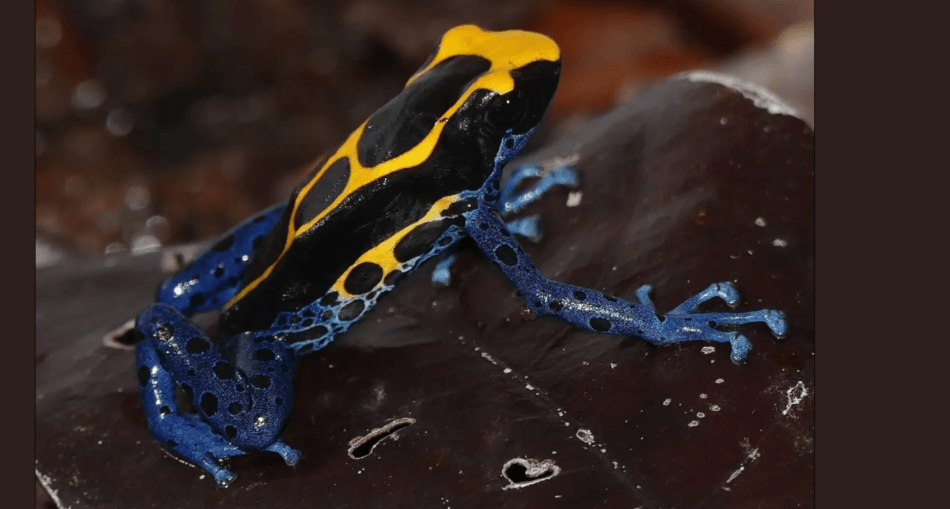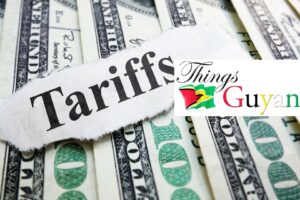The lush rainforests of Guyana are home to a rich diversity of flora and fauna, including one of the most colourful and captivating species – the dyeing dart frog (Dendrobates tinctorius).
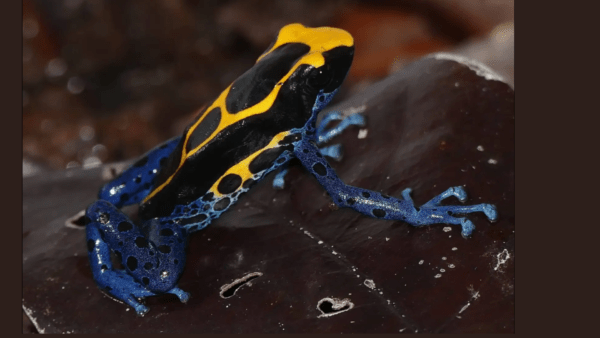
The Dyeing Dart Frog [Photo: Bernard Dupon]
Known for its striking colours and intriguing behaviours, this species is a natural wonder that continues to fascinate scientists, nature enthusiasts, and conservationists.
AN OVERVIEW OF THE DYEING DART FROG
The dyeing dart frog, also known as the dyeing poison dart frog or “tinc” (a nickname commonly used by frog hobbyists), is among the largest of the poison dart frog family, reaching up to 5 cm (2.0 inches) in length.
This vibrant amphibian is native to the Guiana Shield, a massive geological formation that extends through parts of Guyana, Suriname, French Guiana, and Brazil.
The forests of Guyana provide a crucial habitat for this species, making it an important part of the country’s ecological landscape.
THE FASCINATING ORIGINS OF ITS NAME
The scientific name Dendrobates tinctorius is derived from Latin, with “tinctorius” meaning “dyer.”
Interestingly, this name is linked to indigenous legends. According to some native tribes, the toxins from the frog were used to dye the feathers of green parrots, transforming them into bright, multicoloured plumes.
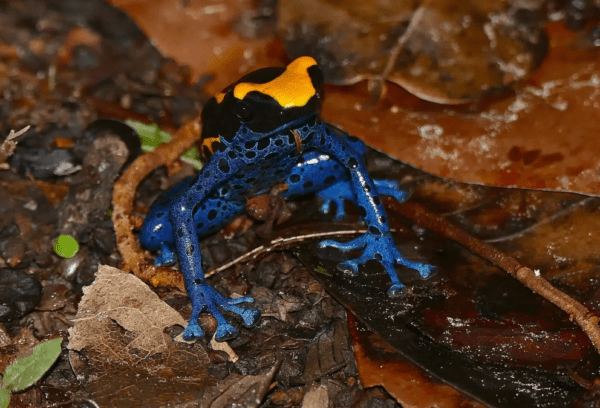
The Dyeing Dart Frog [Photo: Bernard Dupon]
This unique cultural association highlights the deep connection between the dyeing dart frog and the traditional practices of Guyana’s indigenous communities.
A SPECTRUM OF COLOURS: THE FROG’S UNIQUE APPEARANCE
The dyeing dart frog is renowned for its dazzling array of colours and patterns, making it one of the most variable of all poison dart frogs.
In Guyana, this species exhibits a predominantly black body adorned with irregular yellow or white stripes, complemented by legs that can range from sky blue to deep cobalt.
These bright colours warn potential predators about the frog’s toxicity, a survival mechanism known as aposematism.
One particularly striking morph found in Guyana is the “aureus” morph, which is characterised by a primarily blue body with black spots resembling a starry night sky.
Each morph is often tied to specific regions within the Guiana Shield, showcasing the frog’s adaptability to various microhabitats.
HABITAT AND DISTRIBUTION IN GUYANA
The dyeing dart frog thrives in Guyana’s tropical rainforests, particularly in areas with dense foliage and high humidity.
It is typically found in upland regions and at the base of hills, where the environment provides an abundance of leaf litter, fallen logs, and freshwater pools—ideal for breeding and shelter.
These frogs are often seen on the forest floor, though they are known to climb low shrubs and trees in search of food.
Unlike other dart frogs that prefer lower altitudes, Dendrobates tinctorius can be found at elevations up to 350 meters (1,150 feet), where it coexists with other amphibian species in a delicate ecosystem.
The isolation of frog populations in Guyana is attributed to natural barriers such as rivers and the seasonal flooding of lowland areas, which creates pockets of suitable habitats across the landscape.
TOXIC YET BEAUTIFUL: THE DYEING DART FROG’S VENOM
While the dyeing dart frog’s vibrant colours are captivating, they also serve as a warning sign. These frogs produce pumiliotoxins, a group of potent alkaloids that protect them from predators.
When threatened, the frog’s skin secretes toxins that can cause pain, cramping, and stiffness.
Although not as lethal as the toxins found in other dart frog species like Phyllobates terribilis, the venom of Dendrobates tinctorius is still strong enough to deter most would-be predators.
For humans, direct contact with the frog’s skin can result in mild numbness or irritation, especially if there are cuts or open wounds.
Therefore, it’s important for those exploring Guyana’s rainforests to appreciate the beauty of these creatures from a distance and avoid any physical contact.
DIET AND LIFESTYLE
The dyeing dart frog is primarily terrestrial, preferring to stay on the forest floor where it hunts for small insects.
Its diet mainly consists of ants, termites, and small beetles. These insects are believed to contribute to the frog’s toxicity, as they accumulate alkaloids in the frog’s skin.
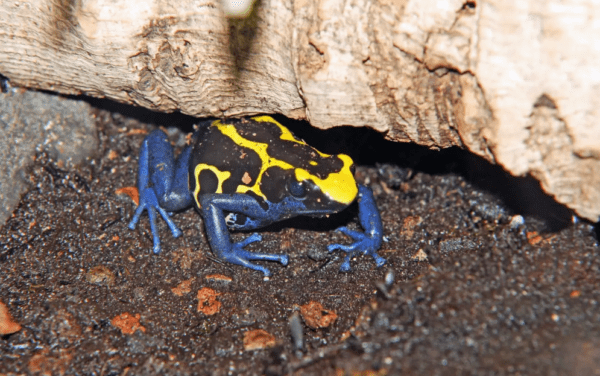
Photo: Joachim Frische
This diet is crucial for maintaining their potent defenses, particularly in the wild.
During the breeding season, these frogs engage in elaborate courtship displays.
Males are known for their vocal calls, which attract females to their territory. After a successful mating, females lay their eggs in damp, secluded spots, and males often transport tadpoles to nearby water bodies, ensuring the next generation has a safe environment to grow.
Eco-tourism in Guyana plays a significant role in raising awareness about the need to preserve such species.
Guided tours in areas like the Iwokrama Forest and Kaieteur National Park offer visitors a chance to witness these stunning creatures in their natural habitat, promoting both environmental education and sustainable tourism.

